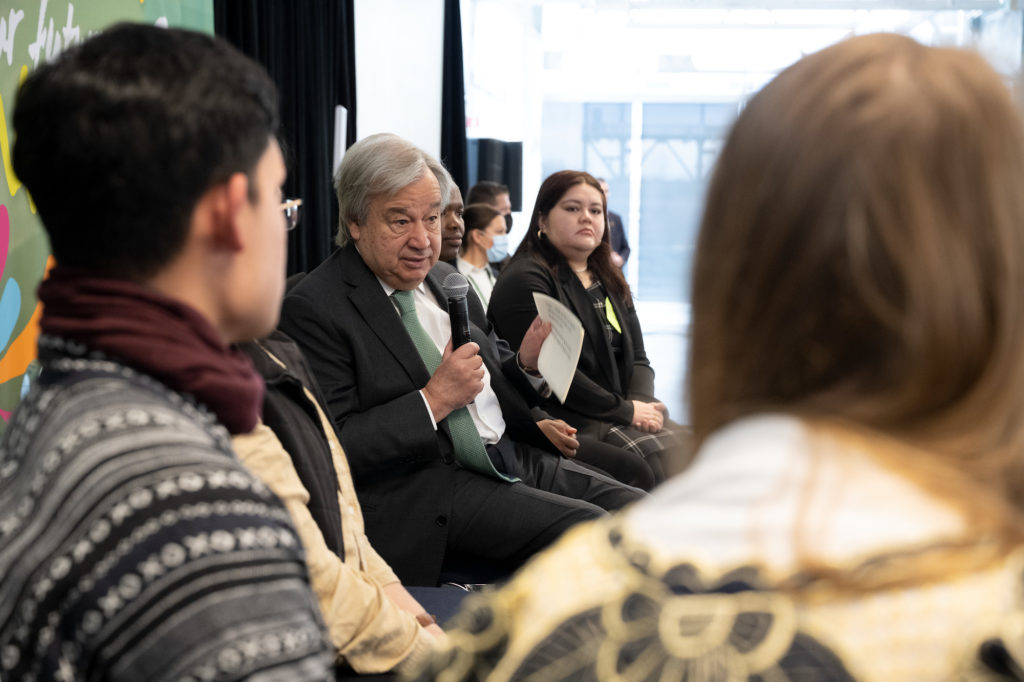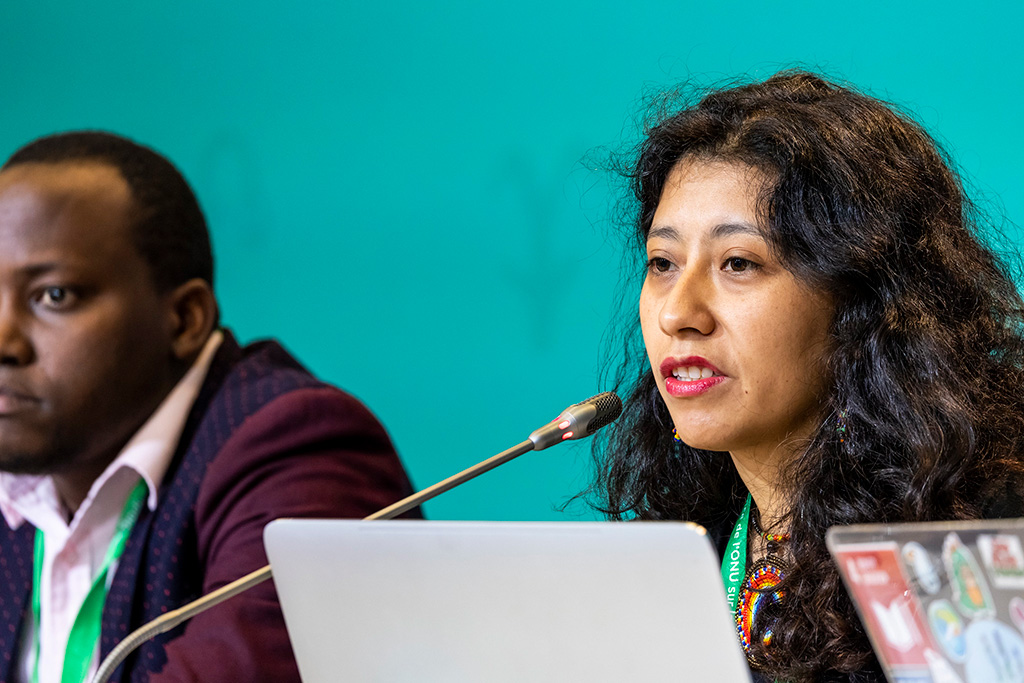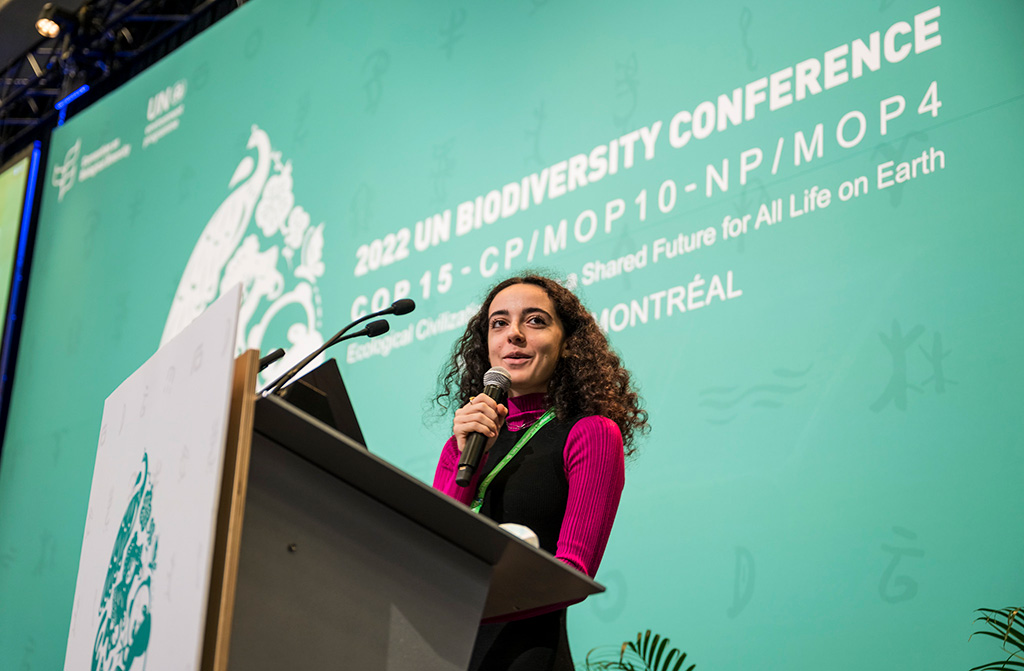Beginning with a blessing from indigenous elder Otsi’tsaken:ra a Kahnawa:ke, the Global Youth Biodiversity Network (GYBN) kicked off their COP15 summit two days before the official meetings began. With 280 member organisations representing a total of 664,000 members from 140 countries worldwide, the largest youth delegation in the history of the Convention on Biological Diversity (CBD) attended this year’s COP. The network was founded around 2012 and aims to build capacity among youth to participate and actively engage in CBD processes. It can be difficult enough for adults to understand the CBD process, so the youth summit ensures that participants learn how the process works. Through different sessions and panel discussions, participants could learn more about the CBD, environmental governance and policy advocacy. There are also opportunities for them to share how they fight for biodiversity in their own part of the world. Different perspectives and contexts got a chance to meet and learn from each other.
The summit also had some high-level officials as speakers. They even managed to invite the Secretary General of the United Nations, Antonio Guterres. He expressed that the biggest hope for the future was the youth. Through funding for transformational movements and capacity building of youth, Guterres was hopeful for the future. Among other speakers were Mathieu Lacombe, Minister of Culture and Communication and Minister Responsible for Youth of Quebec, and Zhou Goumei, the COP15 President Representative. Goumei highlighted the important role youth play in achieving and realising strategic biodiversity targets: “the youth community has been proactively participating in the process of implementation of CBD, and I’m pleased to see that more and more young people are engaged,” Goumei told the audience.

But among the usual speeches held by high-level officials, the core of the Summit was the youth themselves. Swetha Strotra Bhashyam and Christian Schwarzer, focal points of the global south and global north of GYBN respectively, were the stars of the Summit. As one of the founders of GYBN, Schwarzer expressed the difficult path youth has to navigate in what can only be described as a bureaucratic jumble. “It has not been easy,” said Schwarzer, “We’ve been told that we are too young, too inexperienced or simply not important enough to have a seat at the table.”
Schwarzer argued that youth participation has so far been a form of tokenism — “youth are used as tokens and are not truly invited for any meaningful engagement,” argued Schwarzer. But he reminded the participants that youth participation is a decision adopted by all parties in the CBD. Youth therefore has a mandate to demand their governments to fully involve them in the implementation of biodiversity policies. “We will make sure that our voices are heard loudly inside the conference, inside events, in bilateral meetings and in the negotiations. We are here to show everyone we are a force to be reckoned with,” stressed Schwarzer.
Following intense negotiations, the news was announced that the Kunming-Montreal Global Biodiversity Framework had been adopted. The new framework aims to “take urgent action to halt and reverse biodiversity loss to put nature on a path to recovery for the benefit of people and planet by conserving and sustainably using biodiversity and ensuring the fair and equitable sharing of benefits from the use of genetic resources, while providing the necessary means of implementation.” The overall ambitions are to improve the “integrity, connectivity and resilience of all ecosystems” to increase the overall size of these ecosystems by 2050, and to halt and reduce “human-induced extinction of known threatened species” by tenfold.
According to the GYBN, the framework acknowledges the rights, roles and knowledge of Indigenous Peoples but leaves industry open to continue biodiversity-destroying activities, and land-grabbing. Even protected areas will not be safe. Mirna Fernandez, GYBN Policy Co-coordinator finds that the draft promotes false solutions. “We don’t see a change with this framework. We feel it is going to bring another decade of more of the same” said Fernandez. Moreover, the framework doesn’t propose regulations for big polluters. “It seems like the climate talks have been copied and pasted directly into the global biodiversity framework,” continues Fernandez.

Many youth participants expressed feeling defeated by the previous failed frameworks and empty promises during the summit. The new framework risks intensifying this feeling. In an attempt to address this feeling, Schwarzer pointed out that consensus building is a slow process and failure and success exist at the same time on different levels. Schwarzer emphasised that communities and networks have been growing. “The COP-meetings are not just about making decisions, the community we build here will create change, not COP,” argued Schwarzer. The question remains, how much time do we have until it’s too late?
Written by Nathalia Grandon, SIANI Intern
